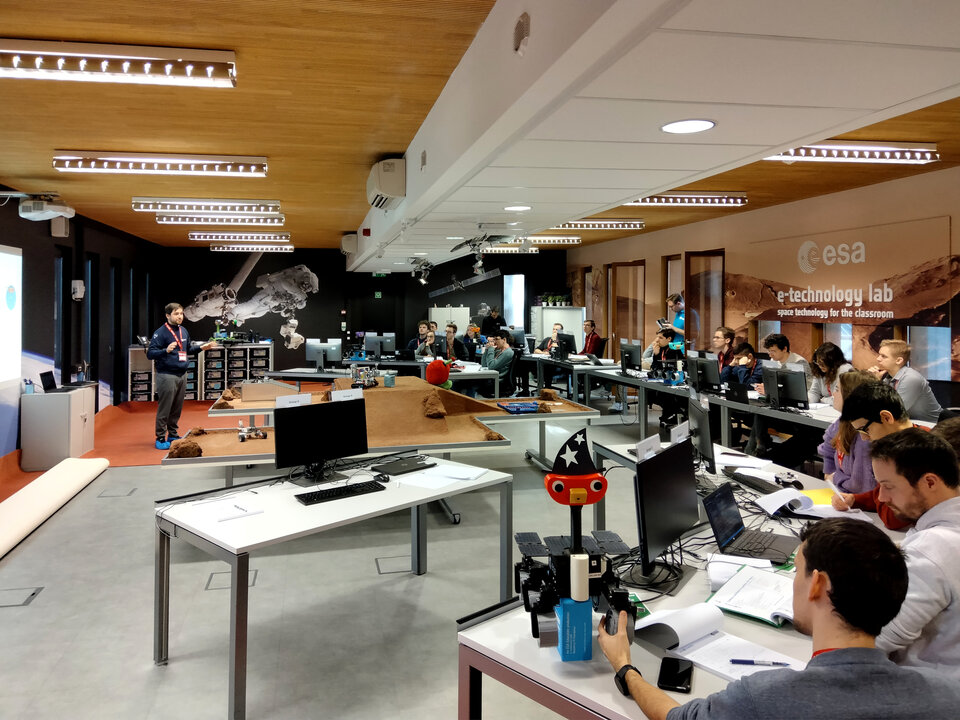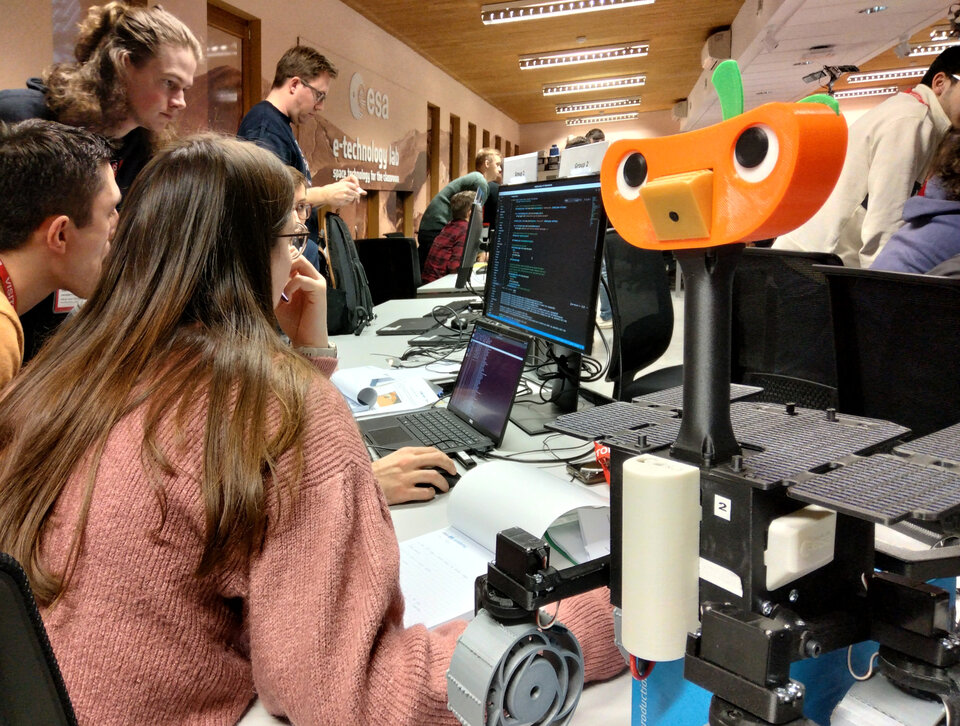Students program Mars rovers in brand new ESA Academy Robotics Workshop
In brief
ESA Education Office and ESA’s Automation and Robotics Section are proud to report the successful completion of the pilot ESA Academy’s Robotics Workshop, which ran from 17 to 20 January 2023 at ESA Education Training Center, ESEC-Galaxia, Belgium. Chosen to participate were 29 Bachelor students with an engineering or computer science background, from 14 different ESA Member States, Canada, and Slovenia.
In-depth
The objective was to facilitate students learning about the design and operation of planetary robots for space exploration. Lectures, tutorials, and hands-on exercises were all used to great effect, and, in particular, time was foreseen for the students to use ROS2 (Robot Operating System).

The students were split into groups, each receiving an ExoMy rover - a 3D-printed robot inspired by the ExoMars Rosalind Franklin rover featuring six wheels, a camera, and a Raspberry Pi computer.
“It was an unforgettable week, combining in-depth lectures, practical exercises, and amazing people,” said a Spanish student from the Universitat Politècnica de Catalunya. “Being able to learn about the specifics of Planetary Robotics and Martian missions from an interdisciplinary perspective, while putting the concepts into practice by means of the ExoMy rover, was an incredible experience.”

After receiving an introduction to robotics for space exploration in ESA Academy’s Training and Learning Facility, the students were challenged to investigate an artificial problem with the ExoMy electronics and connect the software components to control their rovers using a joystick in the E-Technology Lab. They then learnt about locomotion modes and used this knowledge to write algorithms for moving their robots across a simulated Martian surface.
This was followed by a fascinating session on how artificial intelligence is used in space robotics, and how Mars rovers need to detect and recognise objects autonomously due to the lengthy time delay in communicating with Earth. Armed with this new information, the students trained their ExoMy robots to recognise objects using the built-in camera and a machine learning algorithm.

It was make or break on the final day, as each group was tasked with deploying their ExoMy onto a mock-up Martian surface with a mission to navigate autonomously, and ultimately locate and identify a hidden ball. This was very challenging, and the students enjoyed implementing and experimenting to make improvements right until the end.
Finally, the students presented their approaches to the trainers, and were evaluated on their performance in order to receive a transcript and be able to claim ECTS credits from their universities.

“When I signed up for this workshop, it was with the hope of doing something I am really interested in, with like-minded people, in an amazing context,” explained a Romanian student from Universitatea Politehnica Timișoara. “It was that and so much more. Being part of an ESA workshop is something that is hard to top. The passion and ambition I have seen in both the students and trainers is something truly amazing. I had fun, I gained lots of knowledge, and have gotten my ambition and curiosity towards this subject to a whole other level. I will try my best to be part of more ESA projects in the future and I think this is something everybody passionate about the topic of space and technology should try to be part of.”
- For more information on upcoming ESA Academy training courses and opportunities, please visit https://www.esa.int/Education/ESA_Academy/Current_opportunities
- For inquiries, please contact tlp@esa.int















 Germany
Germany
 Austria
Austria
 Belgium
Belgium
 Denmark
Denmark
 Spain
Spain
 Estonia
Estonia
 Finland
Finland
 France
France
 Greece
Greece
 Hungary
Hungary
 Ireland
Ireland
 Italy
Italy
 Luxembourg
Luxembourg
 Norway
Norway
 The Netherlands
The Netherlands
 Poland
Poland
 Portugal
Portugal
 Czechia
Czechia
 Romania
Romania
 United Kingdom
United Kingdom
 Slovenia
Slovenia
 Sweden
Sweden
 Switzerland
Switzerland
























